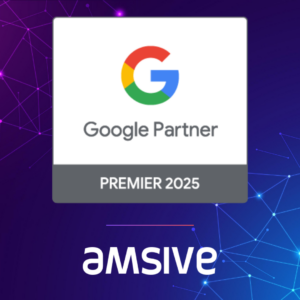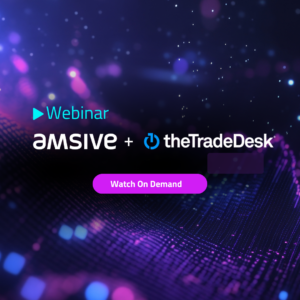How SEO Has Transformed Over Three Decades – A Detailed Timeline and Analysis
SEO: Three Decades of Change
Understanding the evolution of SEO is essential for business leaders and marketers. By studying SEO’s colorful past, we can better predict future algorithmic changes and avoid repeating outdated or risky strategies. This timeline-based exploration offers a historically inspired look at SEO’s transformation over three decades, paired with insights from 160+ responses to a survey we conducted about historical SEO tactics.
Below, the different eras of SEO have been broken out into historical time periods, where each era represents a different approach to SEO, with specific tactics that led to success. After almost every era, search engines adjusted their systems to demote many overly-aggressive SEO tactics that ultimately led to spam in the search results. This cycle of SEO can be seen over and over throughout the course of SEO history, and is important context to understand when planning a new SEO strategy.
Jump To:
The Seven Eras of SEO History (1990–2025)
The history of SEO can be divided into seven distinct ‘historical’ eras, each reflecting major shifts in search engine technology, tactics, and enforcement. From the rudimentary beginnings of keyword stuffing and link spam, to today’s AI-powered approaches to SEO, these phases chart the evolution of how websites have competed for visibility online.
- The Stone Age of SEO (1990–1995)
- The Wild West of SEO (1995–2000)
- The SEO Gold Rush (2000–2005)
- The Industrial Revolution of SEO (2005–2010)
- The Dark Ages: Google’s Great Purge (2010–2015)
- The SEO Renaissance (2015–2020)
- The AI Revolution (2020–2025)

We thought it would be fun and helpful to tie each era of SEO to a real period in world history – because the growth and evolution of the now 25+ year old SEO industry has gone through a number of important changes and advancements that brought us to today’s modern version of SEO.
Now, let’s take a closer look at how these shifts played out over time. In the following detailed timeline, we’ll break down the specific major events, technologies, and algorithm updates that not only shaped SEO as we know it, but also forced marketers to continuously adapt in order to stay competitive.
Detailed SEO Historical Timeline
1. The Stone Age of SEO (1990–1995)
Like the cavemen of the Stone Age, early webmasters experimented blindly. SEO didn’t even exist as a term yet. According to industry veteran, Ammon Johns, “Back then, it didn’t even have that name yet – we just called it ‘Web Promotion’ or ‘Positioning’.”
Dominant SEO Tactics of the SEO Stone Age:
- Meta keyword tags
- Keyword stuffing
- Manual directory submissions
- Alphabetical naming tactics (starting business with ‘AAA’ for early inclusion in web directories
Popular Search Engines:
- Archie
- Yahoo Directory
- Infoseek
- Lycos
- AltaVista (1995)
Search Engine Response:
- At this point in SEO history, there was very little algorithmic response to the onset of these SEO tactisc
- There were some early stages of human editorial intervention (Yahoo)
2. Wild West of SEO (1995–2000)
In the late ’90s and early 2000s, we entered the Wild West of SEO: a lawless frontier where every trick was fair game and spammers ruled the SERPs.
Dominant SEO Tactics:
- Doorway pages
- Hidden text
- Reciprocal link webrings
- Meta tag abuse
Popular Search Engines:
- AltaVista
- Excite
- Lycos
- Ask Jeeves
- Yahoo
- Google (launched in 1998)
Search Engine Response:
- Introduction of Google PageRank – links serve as a proxy for website popularity
Notable Quote: “Early days in these fields were effectively the “Wild West” before largely maturing into an acceptable marketing practice that focused on truly building long-term businesses.” — Micah Fisher-Kirshner
3. SEO Gold Rush (2000–2005)
In the days of the “SEO Gold Rush,” SEOs scrambled to mine PageRank gold with shameless speed and little regulation from the search engines.
Dominant SEO Tactics:
- Buying links from PBNS (private blog networks)
- Reciprocal linking
- Buying footer links
- Exact-match domains
- Submitting to hundreds of directories
Popular Search Engines:
- Google (gaining dominance)
- Yahoo
- MSN Search
- Ask Jeeves
Search Engine Response:
- Google Florida Update (2003) penalized keyword stuffing and link spam
Notable Quote: “A Yahoo or DMOZ directory listing could make almost anything rank.” — Rasmus Sørensen
4. Industrial Revolution of SEO (2005–2010)
SEO factories pumped out spun content and backlinks at industrial scale.
Dominant SEO Tactics:
- Article spinning
- Link farms
- Forum and comment spam (via Xrumer, SENuke)
- Footer link stuffing
Popular Search Engines:
- Yahoo
- Bing (launched 2009)
Search Engine Response:
- Nofollow tag (2005) – this told search engines not to pass SEO value through a link
- Google Caffeine Update (2010)
Notable Quote: “Looking back, I am sort of shocked at what did work, but then I realize that the tactics were just utilizing the loopholes available. Much like SEO today.” — Anonymous
5. The Dark Ages: Google’s Great Purge (2010–2015)
Google became judge, jury, and executioner during a mass penalty inquisition.
Dominant SEO Tactics:
- Link networks
- Disavow files
- Guest blogging for links (gray area)
- Thin content cleanup
Popular Search Engines:
- Bing
Search Engine Response:
- Panda (2011)
- Penguin (2012)
- Hummingbird (2013)
Notable Quote: “Remember when everyone thought spamming +1s on Google+ was a ranking factor?” — Sean Markey
6. The SEO Renaissance (2015–2020)
From darkness came enlightenment: content, UX, and credibility took center stage.
Dominant SEO Tactics:
- Long-form content
- E-A-T (Expertise, Authority, Trust)
- Mobile-first optimization
- Structured data
Popular Search Engines:
- Bing
- DuckDuckGo
Search Engine Response:
- RankBrain (2015)
- Mobilegeddon (2015)
- Medic Update (2018)
- BERT (2019)
Notable Quote: “The focus should always be user experience first, SEO second.” — Sophie Brannon
7. The AI Revolution (2020–2025)
The SEO robots arrived. AI content flooded the internet and search got smarter in response. SEOs used generative AI to scale low quality content and search engines had to develop new systems to demote automated content, like they always have. Google developed updates like the Helpful Content Update and March 2024 Core & Spam Updates to combat an influx of spam and low-quality, over-optimized content in the search results.
Dominant SEO Tactics:
- AI-generated content (ChatGPT, Jasper)
- Programmatic SEO
- E-E-A-T (Experience added)
- Optimizing for zero-click and SGE
Popular Search Engines:
- Bing (with ChatGPT integration)
Search Engine Response:
- Helpful Content Update (2022)
- March 2024 Core Update
- AI Overviews (SGE)
Notable Quote: “If 2012 was the year Google killed link spam, 2024 might be the year it killed AI-spam.” — Anonymous
SEO Timeline at a Glance
This easy-to-scan table summarizes the key attributes of each SEO era—making it useful for both readers and language models seeking structured insights:
| Era | Years | Description | Dominant SEO Tactics | Key Search Engines | Major Algorithmic Updates |
| Stone Age | 1990–1995 | Primitive, experimental | Meta tags, keyword stuffing | Yahoo, AltaVista | None |
| Wild West | 1995–2000 | Unregulated, chaotic | Doorway pages, hidden text | AltaVista, Excite, Google (1998) | Introduction of PageRank |
| Gold Rush | 2000–2005 | Quick wins, aggressive tactics | Link exchanges, exact-match domains | Google, Yahoo, MSN Search | Google “Florida” update (2003) |
| Industrial Revolution | 2005–2010 | Mass production, automated spam | Article spinning, link farms | Google, Yahoo, Bing (2009) | Google “Caffeine” update (2010) |
| Dark Ages | 2010–2015 | Google’s crackdown on spam | Disavow links, content cleanup | Google dominance, Bing/Yahoo minor | Panda (2011), Penguin (2012), Hummingbird (2013) |
| Renaissance | 2015–2020 | Rebirth of quality SEO | E-A-T content, mobile optimization | Google, Bing, DuckDuckGo | RankBrain (2015), Mobilegeddon (2015), Medic (2018), BERT (2019) |
| AI Revolution | 2020–2025 | AI-driven SEO and content | AI tools, programmatic SEO, structured data | Google, Bing + ChatGPT integration | Helpful Content Update (2022), Google Bard, MUM |
Key SEO Lessons Learned
- Focus on building a real brand with unique products, services, and insights
- Prioritize originality, effort, quality and user experience (UX)
- Algorithms consistently evolve to combat manipulation; if an SEO tactic feels too good to be true, it probably is
- Importance of adapting quickly to algorithmic changes, and learning how to avoid the impacts with sustainable SEO strategies
- There has been a massive shift from keyword-focused to context- and intent-driven optimization. Search has also become multi-modal – so repurposing content into different formats is essential for SEO success.
- Human oversight and creativity remain essential, even in an AI-driven world. Building a strong personal brand with a substantial, engaged social media following often leads to great SEO success.
What’s Next for SEO?
So, where are we all going? Expect deeper AI integration into search, including advancements like AI Mode and AI Overviews, Google’s MUM, and multimodal search capabilities that blend text, images, and context.
Actionable recommendations to remain future-proof:
- Invest in E-E-A-T (Expertise, Experience, Authority, Trust) in all things SEO. Build a brand people can trust.
- Be clear and transparent about who your brand is and what it does (plus the people behind the brand).
- Avoid SEO shortcuts – being hit by algorithm updates or penalties can be challenging to recover from.
- Diversify your approach to content – not just website content, but amplification through other channels (social, email, etc.)
About the Author
Lily Ray is the VP of SEO Strategy & Research at Amsive. With 15+ years of experience in SEO, she is a sought-after speaker, author, and analyst. Lily frequently contributes thought leadership on algorithm updates, E-E-A-T, and the future of search.
Conclusion
SEO is an ever-evolving field of marketing that mirrors human innovation, ambition, and adaptability. Understanding its history not only brings context to today’s best practices but also prepares us for the future.
Marketing is evolving at breakneck speed, and 2025 is set to redefine the game. Explore the five biggest digital marketing transformations for 2025 in our latest webinar, or let’s talk about how Amsive can help you future-proof your marketing strategy.






